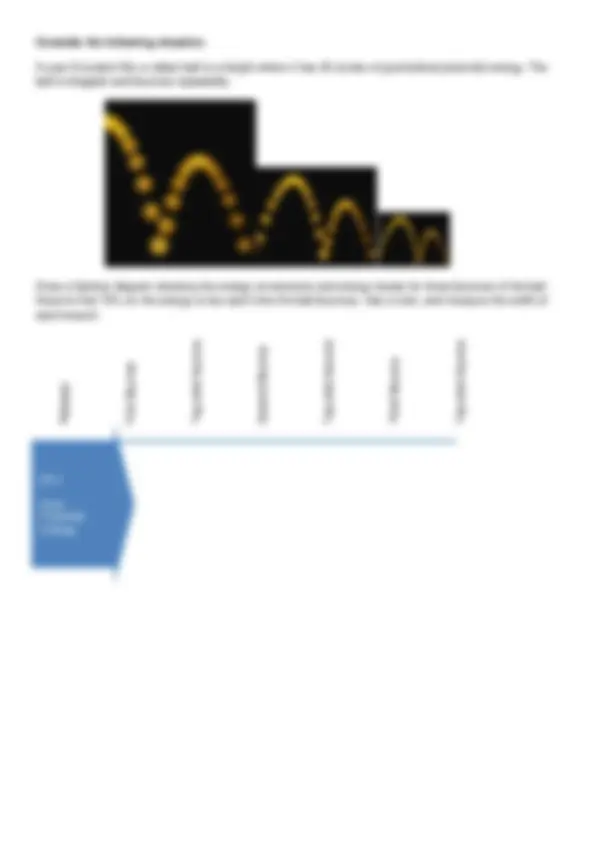




Study with the several resources on Docsity

Earn points by helping other students or get them with a premium plan


Prepare for your exams
Study with the several resources on Docsity

Earn points to download
Earn points by helping other students or get them with a premium plan
Community
Ask the community for help and clear up your study doubts
Discover the best universities in your country according to Docsity users
Free resources
Download our free guides on studying techniques, anxiety management strategies, and thesis advice from Docsity tutors
The following Sankey diagram shows the energy flow for an electricity generator. An electrical generator converts kinetic energy into electrical energy. How ...
Typology: Study Guides, Projects, Research
1 / 4

This page cannot be seen from the preview
Don't miss anything!



An energy flow diagram is a visual way to show the uses of energy in a system. A simple diagram for the energy flow in a mobile phone is shown below. This shows how energy is converted from one form into another. The usable energy stored in the battery as chemical energy becomes degraded energy when converted to sound, light and heat. Degraded energy is energy that is less usable.
Remember that the original energy stored in the battery has been converted from another form of energy when the battery is charged.
Sankey diagrams are more useful because they indicate the amount of usable and wasted energy at each stage of the diagram. Shown below are the Sankey diagrams for two types of light globes. Each of these show 100 Joules of energy, added on the left, being converted into light energy and heat energy. Sankey diagrams are named after Captain Matthew Sankey, an Irish engineer, who published the energy flow diagram for a steam engine in 1898.
Filament Globe Light Emitting Diode, LED
Answer the following questions
Explain what you would mean by the expression, ‘energy efficiency of a light globe’.
Which of the two light globes is more efficient, using your definition? Explain why?
What is that efficiency, in numbers?
How many filament globes are needed to give out the same light as one LED?
The following Sankey diagram shows the energy flow for an electricity generator. An electrical generator converts kinetic energy into electrical energy.
How efficient is this boiler-condenser-turbine-generator system?
Where is the most energy lost?
Consider the following situation.
A year 8 student lifts a rubber ball to a height where it has 20 Joules of gravitational potential energy. The ball is dropped and bounces repeatedly.
Draw a Sankey diagram showing the energy conversions and energy losses for three bounces of the ball. Assume that 70% on the energy is lost each time the ball bounces. Use a ruler, and measure the width of each branch.
Release First Bounce Top after bounce Second Bounce Top after bounce Third Bounce Top after bounce
Grav Potential Energy